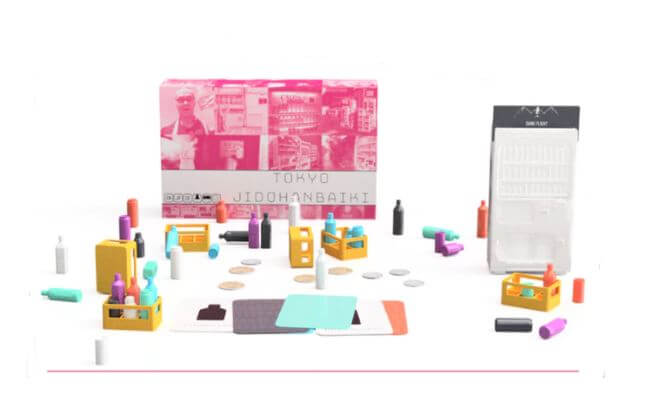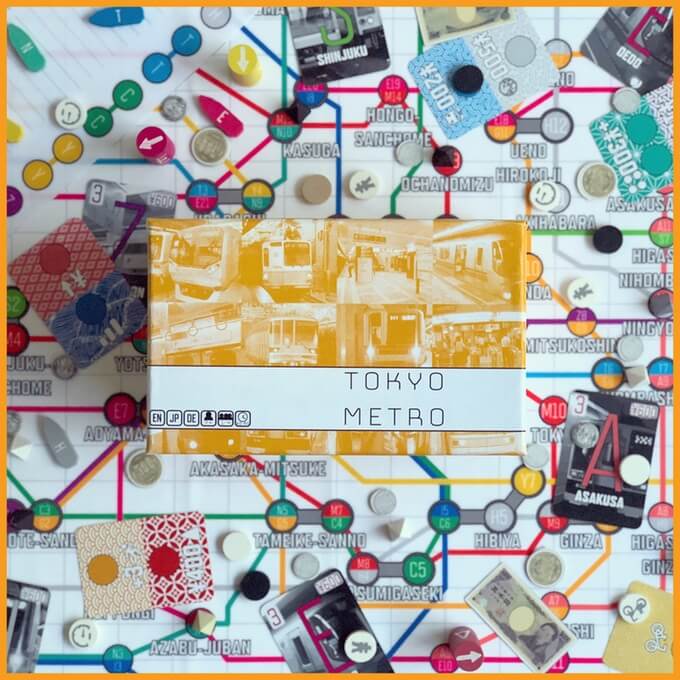Interview with Darkflight Games’ Jordan Draper Creator of the Tokyo Series; Metro, Jutaku and, Jidohanbaiki
Jordan Draper’s first three entries in the Tokyo Series (Metro, Jutaku, Jidohanbaiki) are currently seeking funding over on Kickstarter. From the three already on show, the series is set to be a fantastic, modular collection of miniatures and variety, as we have explained in our article on what we know of it so far — which you can read here.
Our very own Tabletop Lead held an interview with series designer Jordan Draper, which you can find below.
Matt: You’ve mentioned before that you lived in Tokyo for over a year and it has a clear influence on your games, but what inspired you to build what is effectively a “concept album” of games around the theme?
Jordan: Since I was young I’ve always been attracted to things that are overlooked or under appreciated. Hence the vending machines. I’m incredibly detail oriented, and Japan has a love for details. The more time I spent in Tokyo, the more I appreciated Japanese design. I felt there just wasn’t enough room to explore these interests without a series, and the design challenge was appealing.
 M: With Metro, Jutaku and Jidohanbaiki, you have three very different concepts – from steady hand dexterity to what looks like hand to eye coordination and then a heavy economic simulator in between – was it hard to focus on each individual game whilst also considering the others?
M: With Metro, Jutaku and Jidohanbaiki, you have three very different concepts – from steady hand dexterity to what looks like hand to eye coordination and then a heavy economic simulator in between – was it hard to focus on each individual game whilst also considering the others?
J: They were taken on at very different times, so focus wasn’t an issue. I usually become entrenched in one subject very intensely, and this drive helps me to craft a range of ideas. I tend to think of it like an actor, getting into character and living a new theme or reality. I do this when designing in my own way.
M: Where did the idea of combining different (and diverse) products into hybrid games come from?
J: I think efficiency is important in design, and we have to keep pushing forward with it technologically to survive as a species. Even though these are games, they still fit into this mantra. When I was brainstorming how the series could play out, it felt like a missed opportunity not to share some components, not only from a materials standpoint, but also thematically.
M: Have the remaining nine games in the Tokyo series already been conceptualized and tested?
J: Some have, and some haven’t. The next heavy game is very close to being play tested, and there are themes and mechanical concepts for half of the other titles. The remaining 4-5 games I purposefully left open and undecided, as I’m moving back to Tokyo this January and I want to explore more themes while I’m there, studying specific crafts that can perhaps translate into a game.
M: How do you plan to integrate them both at a component level, and perhaps more importantly, how will players be able to accommodate such variety in their minds?
J: The integration is one of the most exciting things to design, it really pushes me to think outside the box because of the component constraints. This leads to really innovative ideas. The nice thing about the titles becoming expansions or extra games when mixed, is that the original title will always be its own game. Integrating is simply a bonus.

M: Will integrated play require a full series and if so, is the plan to release Tokyo games in threes each time?
J: Each integration will require a unique subset of games, so depending on what game you wish to play, certain titles may be required. It’s totally up to the players what they want to try, and the rulebooks will always be available online ahead of time. It is very likely the titles will continue to be released in threes, since it offers a balance in game styles.
M: The component quality and design standard looks very high in all three games – is this the result of the artistic clarity that comes from being the sole designer and artist?
J: I would imagine so. I have a very very specific vision in my mind when I design, especially when it comes to theme and aesthetics. In the beginning I tried outsourcing the 3D modeling for the vending machine in Jidohanbaiki for example, but the front face wasn’t exactly what I wanted, so I spent a week modeling the whole thing myself instead. I’m a perfectionist, it’s a blessing and a curse. I’m trying to learn how to collaborate more and let go of the control a bit.
M: There appears to be a natural synergy between your component choices and the game design, was this intentional and if it was, did you feel that any compromises were made to maintain that synergy?
J: I’m a minimalist in almost every aspect of life, and this reflects in my component choices and graphic work. I also think it’s a waste of time to make something that is oversaturated in the world already, so I am always pushing to either improve on past designs or bring new things to light.

M: What (if any) lessons were taken from Import/Export when it came to designing Tokyo? I can seem some peripheral similarities with Metro, but Tokyo overall seems to be drastically more complex when considered as a series.
J: Import/Export was a huge project for one person, way bigger than I had ever imagined. The main lessons I learned were from the complexity of the game, the rules, and how to bring clarity to that. I actually think the Tokyo Series is more approachable for me because I designed it that way from the beginning. For example, every game is free of language dependency, so only the rulebooks need to translated. This makes a huge difference on many levels.
M: Are you reasonably confident that this project (ambitious as it is) will be a success, and if so, how will you measure success?
J: Success is always subjective, I am pushing myself all the time to beat my past projects in terms of quality, depth, design, and reach. In the end though, earning enough capital from projects to allow me to explore even further the next time around is success to me. Import/Export enabled very heavy prototyping and time to be committed to these new titles.
M: I don’t feel like this is a pure “sales” message, there’s a level of art in this game and I’m interested in what you want people to “take away”.
J: The Tokyo series games are very much a catalyst for people to appreciate everyday life and objects. It’s an amazing world we live in, and a lot of it sits off of our radar. Giving appreciation and focus to the finer details makes me, at least, a happier person.

M: As the sole creative force behind the Tokyo series, how have you undertaken playtesting and feedback?
J: I always lean heavily on blind play testing. It is the sole best way to get honest feedback on your game. Even though I’m heading everything, I have an amazing community of friends willing to test my games (and now a mailing list of almost 100 members as of recently!). They are the star developers in the story, and I owe a lot to them. I’m just the original architect.
M: Have you had to overcome any particularly challenging design choices as the result of feedback?
J: I have had to change some major graphical components in the past due to overwhelmingly similar feedback, but that’s just how it goes. I will change just about anything if enough people suggest the exact same improvement, it would be crazy not too. Luckily though I am almost always in agreeance with feedback for what isn’t working, so changing it is a no brainer.
M: If you could describe Tokyo as an experience in your own words, how would you sum it up in say, a sentence?
J: Exploration, craft, and adventure waiting around every temple corner!
Tokyo Series: Jidohanbaiki, Metro, & Jutaku is currently live on Kickstarter, where it is currently over 400% funded ahead of its campaign end date of February 4th at 8PM UTC.
Comments are closed.